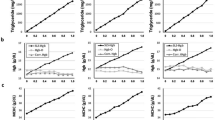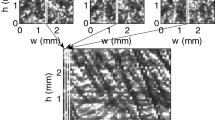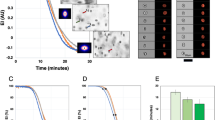Abstract
THE concentration CHb of hæmoglobin is conventionally measured by dividing the hæmoglobin in gm. per cent by the fractional concentration ρ, allowance being made for incomplete packing in the hæmatocrit tube. If a high-speed hæmatocrit is used, ρ can be found with an error of about ± 1 per cent, and the hæmoglobin concentration can be measured by the cyanmethæmoglobin method with an error of about the same magnitude.
This is a preview of subscription content, access via your institution
Access options
Subscribe to this journal
Receive 51 print issues and online access
$199.00 per year
only $3.90 per issue
Buy this article
- Purchase on Springer Link
- Instant access to full article PDF
Prices may be subject to local taxes which are calculated during checkout
Similar content being viewed by others
References
Barer, R., in “The Baker Interference Microscope” (C. Baker of Holborn, Mainsail Press, London, 1955).
Nichols, L., Nat. Paint Bull., 1, 5, 12 (1937).
Author information
Authors and Affiliations
Rights and permissions
About this article
Cite this article
PONDER, E. Hæmoglobin and ‘Apparent Protein’ in the Human Red Cell. Nature 183, 1330–1331 (1959). https://doi.org/10.1038/1831330b0
Issue Date:
DOI: https://doi.org/10.1038/1831330b0
Comments
By submitting a comment you agree to abide by our Terms and Community Guidelines. If you find something abusive or that does not comply with our terms or guidelines please flag it as inappropriate.



